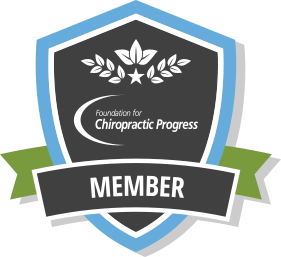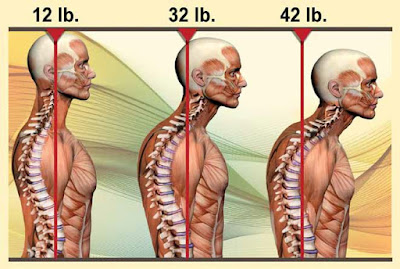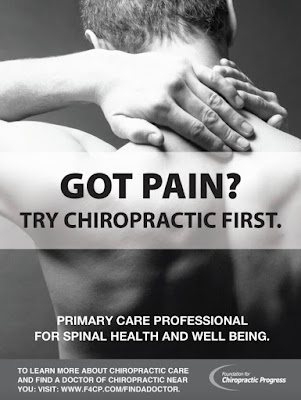On
Tuesday, November 15, 2016, The Dr. Oz Show filmed two segments addressing the
death of Ms. Katie May. The first segment involved the family of Ms. May who
believe Ms. May’s death was a result of the care she received from a
chiropractor. The second segment involved Dr. Oz, Dr. Carolyn Brockington, a
neurovascular surgeon, Mt. Sinai Hospital in New York (http://www.mountsinai.org/profiles/carolyn-d-brockington)
and Dr. Steven Shoshany, a practicing chiropractor from New York (www.drshoshany.com).
While the consideration of any adverse outcome associated with our care is unflattering, the manner in which this situation was addressed by all three panelists was fair, constructive and informative for the public. There was no condemnation of chiropractic, and there was no statement, in this segment, that the chiropractor caused this problem. To the contrary, there was a thorough discussion of vertebral artery dissection, including its rarity in association with chiropractic care, its ability to present in seemingly healthy middle-aged persons, discussion that most dissections do not evolve into a stroke and finally that death from arterial dissection is extremely uncommon.
Three questions were posed to Dr. Shoshany in the six-and-a-half-minute segment including:
While the consideration of any adverse outcome associated with our care is unflattering, the manner in which this situation was addressed by all three panelists was fair, constructive and informative for the public. There was no condemnation of chiropractic, and there was no statement, in this segment, that the chiropractor caused this problem. To the contrary, there was a thorough discussion of vertebral artery dissection, including its rarity in association with chiropractic care, its ability to present in seemingly healthy middle-aged persons, discussion that most dissections do not evolve into a stroke and finally that death from arterial dissection is extremely uncommon.
Three questions were posed to Dr. Shoshany in the six-and-a-half-minute segment including:
- Did
cervical manipulation play a role in the circumstances of Katie May?
- How
important is a patient's history in helping to understand this problem?
- What
are chiropractors doing to address these situations?
Dr.
Shoshany expressed condolences to the family of Ms. May and went on to explain
that the best science available suggests that this was a dissection in progress
that occurred during the photo-shoot involving Ms. May. He used a Bow-Hunter’s
Stroke as an example of the mechanism of causation—that is the strain of
maintaining a stressed position for a period yielded the injury.
He related how rare these events are in chiropractic.
The discussion moved to comments from Dr. Brockington, the neurovascular surgeon. She was asked point blank by Dr. Oz, “Do you think manipulation caused the dissection?”
The discussion moved to comments from Dr. Brockington, the neurovascular surgeon. She was asked point blank by Dr. Oz, “Do you think manipulation caused the dissection?”
-
She did not say the
chiropractor caused this stroke.
- She did not raise undue concern
about cervical spine adjusting.
In response, she related that she, as a stroke specialist, sees strokes every day. Some of the strokes she sees have known causes and many don’t. She related that she recently saw a gentleman who developed an arterial dissection while painting. She noted that these conditions can occur in seemingly healthy persons in their 30-50s with no prior history. She reviewed an angiogram to show what a dissection looked like on imaging and to explain how it was related to blood flow and oxygenation of the brain.
In response, she related that she, as a stroke specialist, sees strokes every day. Some of the strokes she sees have known causes and many don’t. She related that she recently saw a gentleman who developed an arterial dissection while painting. She noted that these conditions can occur in seemingly healthy persons in their 30-50s with no prior history. She reviewed an angiogram to show what a dissection looked like on imaging and to explain how it was related to blood flow and oxygenation of the brain.
She discussed that most dissections don’t lead to stroke,
but cervical artery dissection did account for 1 in 5 strokes in middle-aged
persons.
The conversation moved to the
second question about the value of a patient history.
Dr. Shoshany
related that, as a clinician, Dr. Oz appreciated that the patient history was
the most valuable tool we have to work with. He related the importance of
knowing about a history of stroke, aneurysm, dissection, collagen disorders,
etc. Dr. Oz then walked the audience through the 5 Ds, the 3 Ns and the A
associated with cervical artery dissection:
- Diplopia
[a.k.a. double vision]
- Dysphagia:
difficulty in swallowing
- Dysarthria:
difficulty in speech articulation
- Drop Attacks: a tendency to fall without
warning and without losing consciousness, or a fall of this kind
- Dizziness
- Nausea
- Numbness
- Nystagmus:
an involuntary rhythmic movement of the eyes, usually from side to side, caused
by some illnesses that affect the nerves and muscle behind the eyeball
- Ataxia:
the inability to coordinate the movements of muscles
The
advice given was that one should think of their
neurologist OR visiting the emergency room rather than chiropractor
when one has neck pain with these additional symptoms.
The third question about what the profession is doing about this problem allowed Dr. Shoshany to explain that the profession has been addressing this situation for decades. He also added that he has delivered more than 200,000 cervical adjustments in his 20+ years of practice in Manhattan without a single occurrence of this problem. He added that Life University, the largest single campus chiropractic program in the world, has provided an estimated 4.5 million cervical adjustments during the past 25 years without any incident of this nature. Finally, he added that among the 17 chiropractic educational programs in the United States, there has not been a single incident, to his knowledge, of this nature in the past 20 years.
Dr. Oz read a statement from the American Chiropractic Association (ACA) commenting on how DCs are educated and trained in differential diagnosis based on history, examination, etc., and that they are trained to refer when necessary for further evaluation or emergency intervention.
Dr. Shoshany again emphasized the safety of chiropractic and offered the view that when you consider our safety record in light of 45 people dying every day of opioid use and abuse, chiropractic care is even safer than first thought.
The segment ended with Dr. Oz offering the following comments:
The third question about what the profession is doing about this problem allowed Dr. Shoshany to explain that the profession has been addressing this situation for decades. He also added that he has delivered more than 200,000 cervical adjustments in his 20+ years of practice in Manhattan without a single occurrence of this problem. He added that Life University, the largest single campus chiropractic program in the world, has provided an estimated 4.5 million cervical adjustments during the past 25 years without any incident of this nature. Finally, he added that among the 17 chiropractic educational programs in the United States, there has not been a single incident, to his knowledge, of this nature in the past 20 years.
Dr. Oz read a statement from the American Chiropractic Association (ACA) commenting on how DCs are educated and trained in differential diagnosis based on history, examination, etc., and that they are trained to refer when necessary for further evaluation or emergency intervention.
Dr. Shoshany again emphasized the safety of chiropractic and offered the view that when you consider our safety record in light of 45 people dying every day of opioid use and abuse, chiropractic care is even safer than first thought.
The segment ended with Dr. Oz offering the following comments:
- Cervical
artery dissections happen; this doesn’t mean you need to avoid going to your
chiropractor.
- This
doesn’t mean it was caused by the chiropractor.
- It
does mean anyone with neck pain needs to fully advise their chiropractor of any
other symptoms or problems they are having with the neck pain.
The Take-Aways
1. The
family of Ms. May are naturally upset about the loss of a loved one. They are
entitled to their emotional grief, and even if the data doesn't support the argument, they may choose to direct it toward
the chiropractic profession.
2. The DATA cited on The Dr. Oz Show from chiropractic education about this type of issue is as follows:
- Life
University, 25 years, 4.5 million cervical adjustments—no dissection related
issues have been reported
- Among
all 17 chiropractic educational institutions, 20 years, millions of cervical
adjustments—no dissection related issues have been reported
- The
25-year window at LIFE and the 20-year window across chiropractic education
should not imply something happened 26 or 21 years ago, respectively. The data
isn’t available for the period before those dates.
3. The 5 Ds, 3 Ns and the A the telltale signs of a health history
- Dysphagia,
dysarthria, diplopia, drop attacks and nystagmus are important symptoms that,
by themselves in the presence of neck pain, strongly suggest a level of care that DOES NOT include chiropractic.
- Dizziness,
nausea, numbness and ataxia are not as strongly associated by themselves with
dissection and stroke, but you should look for the development of these
symptoms in a constellation as a guide to increasing your index of suspicion.
- When
you experience neck pain is “unlike any pain I ever had before
in my life” or “the most unusual pain I have ever had” or “the worst pain I
have ever had,” THINK about the possibility of a dissection in progress and
handle accordingly.
4. Chiropractic
care is very safe. When it is viewed in a comparative sense with pharmaceuticals or surgery for similar types of problems, it is remarkably
safe. Life has risks. There are fewer risks under chiropractic care than under
medical or surgical care.
5. This
wasn’t discussed on The Dr. Oz Show, but it is something you should be aware
of: The Coroner’s Report in the case of Ms. May noted: “Bilateral vertebral
artery dissection is a rare complication of neck manipulation in one per
100,000 to one in 2 million manipulations. (South Med J. 2007 Feb;
100(2):201-3)”
* The literature cited is misquoted as
follows:
-
The
article states “Serious complications are infrequent, with a reported incidence
between one per 100,000 and one per 2 million manipulations.”
1. This
does not refer exclusively to vertebral artery complications.
2. This
does not refer to bilateral vertebral artery dissection.
- The
literature cited did not identify an arterial dissection-unilateral or
bilateral on imaging or during autopsy.
- The
literature cited was the weakest class of evidence, a single case study, and
neglected the opportunity to refer to two more recent case-control and
case-crossover studies (Cassidy, 2008) and Kosloff (2015). He also chose not to
refer to a recent meta-analysis on this subject conducted by neurosurgeons at
Penn State Hershey Medical Center (Church, 2016).
Bilateral cervical artery
dissection is more commonly
associated with a disease of the arteries (arteriopathy) than with
other causes.




